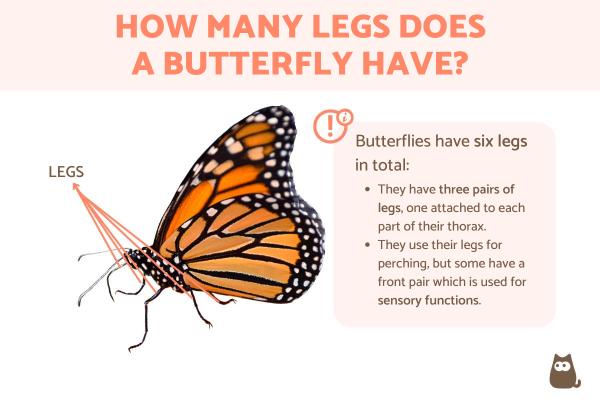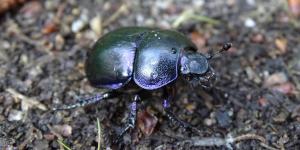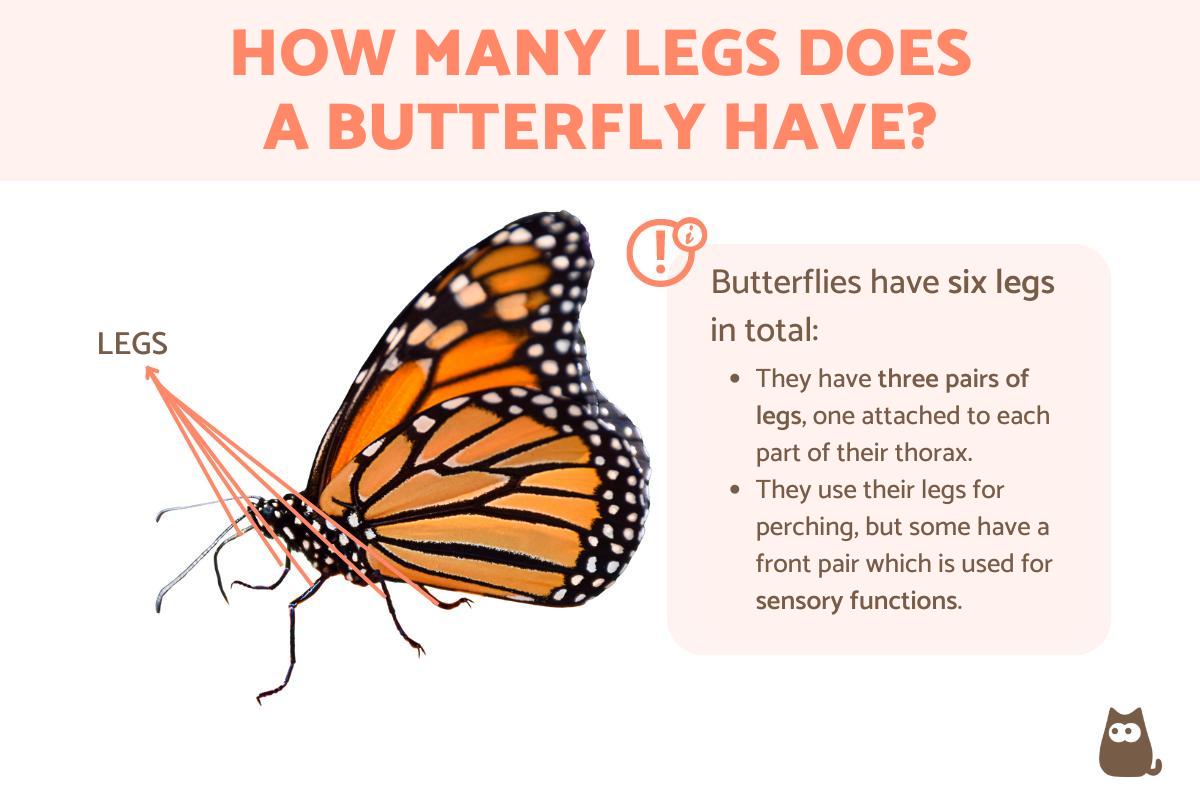How Many Legs Do Butterflies Have?


Like flies, mosquitoes or dung beetles, butterflies are insects. Unlike these other arthropods, butterflies are often seen as being separate due to their beautiful wings. We might swat a fly or squash a mosquito, but many of us will let a butterfly dance around us happily. Despite this difference in perception, all the animals mentioned here are insects. Despite their differences, they share many key traits with the other many millions of insect species known to us. The group of butterflies themselves are very diverse with around 16,000 known species and a worldwide distribution. With this in mind many of us may wonder how many legs do butterflies have?
At AnimalWised, we can reveal that butterflies have six legs, just as all insects do. In addition to how many they have, we discover more about the legs of a butterfly. We find out about their anatomy and how they function.
Number of legs of a butterfly
As a type of insect, butterflies belong to the subphylum known as Hexapoda. This is a taxonomic group which translates as directly from the Greek as ‘six legs’. As with all members of this subphylum, butterflies have six legs.
Butterflies are easily identifiable by their large wings in relation to their body. As with all insects, they have a head, thorax and abdomen with the legs attached to the thorax. They have very noticeable antennae which are used to perceive their environment. Another typical feature of butterflies is the presence of tiny scales which are particularly noticeable on the wings which result in their vibrant patterns and colors.
With these basic characteristics of butterflies, we look at how the legs are positioned with the rest of their anatomy. We do so by looking at the different body parts of butterflies:
- Head: the head of the butterfly usually contains a proboscis, although it may be absent in a minority of species. All have antennae, but these can present in different lengths and shapes, something which helps us to differentiate between species. They have fairly well-developed compound eyes formed by ocelli, as well as other sensory organs.
- Thorax: the thorax of a butterfly contains three fused elements, the prothorax, mesothorax and metathorax. Two pairs of wings are found in the mesothorax, which are generally the most visible structures of these animals. They are frequently combined with distinctive colors or patterns, which can also help in the identification of the species. The three pairs of legs which make up the six total legs of a butterfly have one pair attached to each part of the thorax.
- Abdomen: a butterfly abdomen consists of several segments and is where sound receptors can be found, although these can also be present in the thorax or wings. The genitals and other important structures for these insects are also located in the abdomen.
In addition to the anatomy mentioned here, you can learn more about the parts of a butterfly and their functions in our related article.
What are the legs of a butterfly like?
We already know that a butterfly has six legs in total. Moving from the proximal to distal parts of the legs, we can see that each leg of a butterfly has the following structures:
- Coxa: the part of the butterfly leg which is attached to the aforementioned sections of the thorax.
- Trochanter: rather than a segment in itself, this part of a butterfly leg anatomy acts as a hinge between the coxa and femur to best allow movement.
- Femur: usually the largest part of the butterfly leg. It is strong and allows for the butterfly's various movements.
- Tibia: the intermediate area of a butterfly's leg. There may a structure on the tibia known as the epiphysis, which is used for grooming the antennae. This structure varies in shape, size and even between the sexes since many butterfly species display sexual dimorphism in animals. It may also present a spur, which is a spike-shaped appendage, something also used in the classification of lepidoptera.
- Tarsus: corresponds to the distal part of a butterfly's leg and ends with a claw-shaped structure.
The legs of butterflies are arranged on each of the fused segments of the thorax. All butterfly legs are covered with typical lepidopteran scales.
The descriptions mentioned correspond to the adult form. In the case of the larval form of butterflies, they have 3 pairs of true legs and several pairs of false legs known as prolegs. The number of prolegs in butterflies can range in number from 8 to 11. These false legs have structures known as apical crochets or grasping crochets that allow the larvae to hold on to surfaces. Normally, each segment of the caterpillar has a pair of legs.
Learn more about the larval, adult and other stages of this insect with our article asking how are butterflies born?

What are the legs of a butterfly used for?
The legs of butterflies have various functions. They are principally used to perch when descending from flight. Another function is walking, so they allow them to have a locomotor function. Additionally, butterfly legs have olfactory organs that help them perceive their food, similar to smelling or tasting.
Not all characteristics of a butterfly's legs are generally applicable to all groups. For example, members of the Nymphalidae family have reduced front legs. These forelegs are not used for walking or perching like the others. It is believed they are used more for a sensory function than for movement.
While we have described how the legs of a butterfly work, as well as their anatomy, you may wonder if these characteristics are applicable to other members of the Lepidoptera order. You can do so with our article on the differences between butterflies vs. moths.
If you want to read similar articles to How Many Legs Do Butterflies Have?, we recommend you visit our Facts about the animal kingdom category.
- Ancajima, G., & Duarte, M. (2023). Morphological variation of the epiphyses in some Ambulycini hawkmoths (Lepidoptera, Sphingidae, Smerinthinae).
https://doi.org/10.1016/j.jcz.2023.02.003 - García, E., Romo, E., Sarto, V., Munguira, M., Baixeras, J., Vives, A., & Yela, J. (2015). Order Lepidoptera.
http://sea-entomologia.org/IDE@/revista_65.pdf






